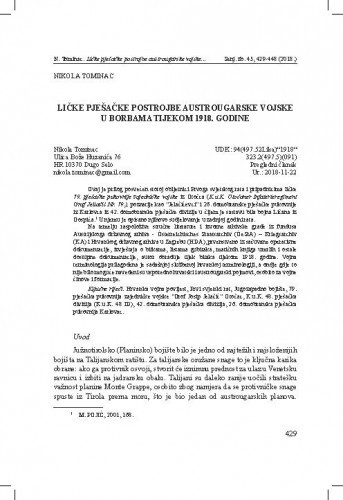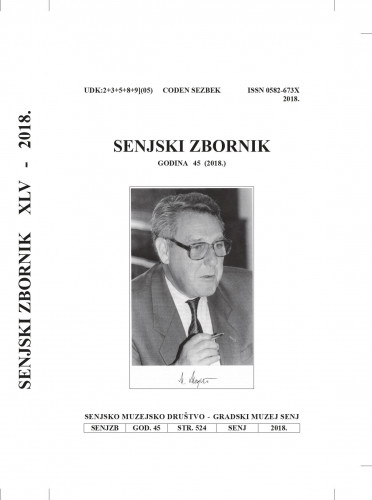Ovaj je prilog posvećen stotoj obljetnici Prvoga svjetskog rata i pripadnicima ličke79. pješačke pukovnije zajedničke vojske iz Otočca (K.u.K. Otočaner InfaterieregimentGraf Jellačić Nr. 79.), poznatije kao "Jelačićevci" i 26. domobranske pješačke pukovnijeiz Karlovca iz 42. domobranske pješačke divizije u čijem je sastavu bila bojna Ličana iz Gospića. U njemu je opisano njihovo sudjelovanje u zadnjoj godini rata. Na temelju raspoložive stručne literature i izvorne arhivske građe iz fundusa Austrijskoga državnog arhiva - Österreichisches Staatsarchiv (ÖeStA) – Kriegsarchiv(KA) i Hrvatskog državnog arhiva u Zagrebu (HDA), prvenstveno iz sačuvane operativne dokumentacije, izvještaja o bitkama, listama gubitaka, matičnih knjiga umrlih i ostale dostupne dokumentacije, autor obrađuje tijek bitaka tijekom 1918. godine. Vojna terminologija prilagođena je sadašnjoj službenoj hrvatskoj terminologiji, a ondje gdje tonije bilo moguće navedeni su usporedno hrvatski i austrougarski pojmovi, osobito za vojne činove i formacije.; This contribution is dedicated to the 100th anniversary of the First World War and members of the 79th Infantry Regiment of the Joint Forces from Otočac (K.u.K. Otočaner Infaterieregiment Graf Jellačić Nr. 79.), more famous as the “Jelačićevci” and the 26th Homeland Infantry Regiment from Karlovac from 42nd Homeland Infantry Division in whose formation was the third battalion of men from Lika from Gospić. In it is described their participation in the last year of the war. On the basis of available specific literature and source archive material from the holdings of the Austrian state archive - Österreichisches Staatsarchiv (ÖeStA) – Kriegsarchiv (KA) and theCroatian State Archive in Zagreb (HDA), primarily from the preserved operational documentation, battle reports, lists of the losses, registry books of the dead and other available documentation, the author processes the course of the battles during 1918, in other words, the last year of the war. The military terminology has been adapted to today’s official Croatian terminology, and where that was not possible the Croatian and Austro-Hungarian terms are cited alongside each other, particularly for military ranks and formations.
Sažetak

 Senjski zbornik : prilozi za geografiju, etnologiju, gospodarstvo, povijest i kulturu : 45(2018).
Senjski zbornik : prilozi za geografiju, etnologiju, gospodarstvo, povijest i kulturu : 45(2018).